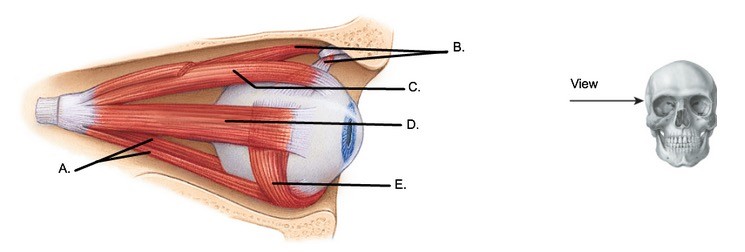When you breathe, the pressure inside the lungs is different than the pressure outside the lungs. This is an example of a(n) __________.
Fill in the blank(s) with the appropriate word(s).
pressure gradient
You might also like to view...
All arteries carry oxygenated blood.
Answer the following statement true (T) or false (F)
Which of the following is the origin of the bulbospongiosus in the female?
A) ischial spine B) inferior ischial ramus C) linea alba and pubis D) coccyx E) collagen sheath at the base of the clitoris
 The figure illustrates a lateral view of the right eyeball. What does "D" represent?
The figure illustrates a lateral view of the right eyeball. What does "D" represent?
A. Lateral rectus B. Inferior rectus C. Superior oblique D. Superior rectus E. Inferior oblique
The ability of the olfactory system to adapt to a particular odor may involve
A. sensitivity of the olfactory cortex. B. an increase in the sensitivity at the receptor sites. C. neurons from the medial olfactory area stimulating mitral cells and tufted cells. D. the intermediate olfactory area sending inhibiting impulses to the olfactory bulb. E. molecules that do not bind to receptors anymore.